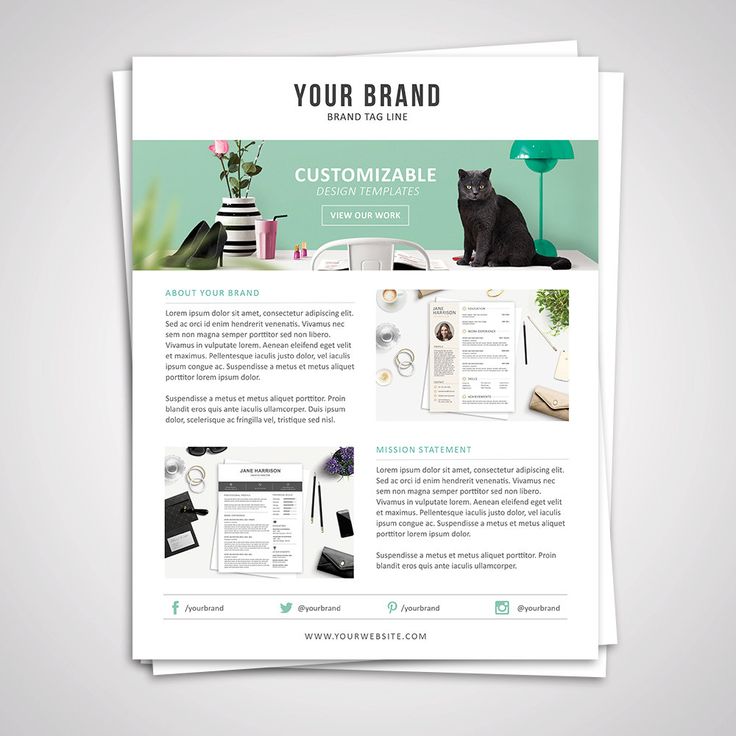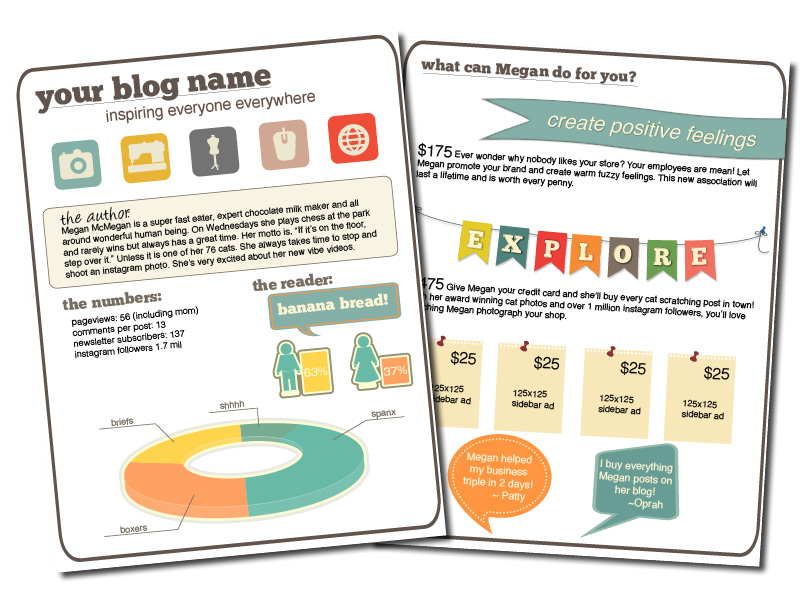Making a media kit/pack seems like it would be easy, but let me tell you, it is not. Do you publish prices? What do you include? What do you not include? Well, after looking at our very substandard media kit we decided we needed to seek some advice.
Here are 11 tips contributed by industry experts, on how to make a successful and profitable media kit/pack.
Navigate the article
#1 Include Multiple Versions of your Logo
Give journalists the option to choose which version of your logo will work best with the article they are writing. For example, in your media kit, you can include a version of your logo that is black & white, horizontal, vertical. As well, it is helpful to provide logos that exceed a width and height of 1500px. The journalist will appreciate working with a larger, higher resolution version of your logo that can be sized down.
Contributors: Mazdak Mohammadi from blueberrycloud
#2 Use Infographics
Although a simple text-only file can do the job, it's plain and boring, especially when you have lots of statistics to share. A nice design and visuals will create a good impression on your target audience. Infographics are helpful for this.
Contributors: Khanh Tran from Villa Finder
#3 Neat Consistent Package
Any business can put together a media kit, whether they want it to represent their enterprise as a whole, or cover a specific topic or event. The key [is] to bundle all of the necessary components in a neat, consistent package.
At Markon, we recommend the following:
- Short descriptor of your company/event with key stats
- Images optimized for digital use
- Video 30 seconds or less, this way it fits well into a news clip, article, or social media post.
- Quotes pulled separately from a press release
- Press Release single page
- Contact Information Have all of these items live on a web page on your website. That way they’ll be safely accessible (not attached to an email), while the content also gets to live on your website (so it can be crawled by Google).
You can also combine all of this into a well-designed PDF that individuals can receive upon request. Or you can make it downloadable as a single file from your website, or some other space.
Contributors: Kristine Neil from Markon Brands
#4 Outline Services With Prices
Part of my rotine envolves receiving MediaKits for future sponsorship opportunities. It can be disappointing when you miss essential services and/or prices for partnerships that you would be interested in. Display all types of services like ads, reviews, sponsorship, etc. Also, make sure to include a small description of what would be included in that price.
Contributors: Tamiris Neves from Get Snackable
#5 Include testimonials from previous clients
Reading testimonials from previous partners makes you want to also be part of that team. Also, it's essential to showcase your reliability and brilliant work.
Contributors: Tamiris Neves from Get Snackable
#6 Professional Headshot
It’s essential that your picture be professionally taken. The picture should reflect your personality.
Contributors: Anita Wilson from Alias In Town
#7 Company Story
One essential item you must have in your media pack is your company's story. People want to find out who you are and why your business came to be. This information gives key insight into who you are as a brand and why you exist.
Another important item to have in your media pack are company facts. Interested parties want to know how many customers you serve, how long you have been in business, the number of items you sell, website traffic stats, social media follower counts, awards received, etc. The more you can list the better since it shows value to your potential business partners.
Contributors:Joe from Trusty Joe
#8 List of Appearances and Happenings
An ongoing, living list of appearances and happenings that you are involved in.
Contributors: Anita Wilson from Alias In Town
#9 Think like a CEO
Most decision makers and CEOs don’t want to read through a long document, they want to read one or two pages and quick snapshot bullet points.
The most important information is things like what services your company offers. This is a great way to upsell other products that might help their business. Also your USPs, so what you offer that competitors don’t.
This may sound obvious but you’d be surprised how many companies don’t differentiate their businesses. Budgets would also ideally be upfront too. Many companies don’t like to give prices, especially up front in fear of scaring clients off without the sales first, but even giving a minimum budget you will work with will give transparency and prevent any timewasters.
Also, don’t put your companies client portfolio and testimonials at the beginning. It’s a mistake many companies make. The client would have done some groundwork, which is why they connected with you, so begin by showing how you can service the client and solve problems and then end with showcasing credentials to build trust.
Contributors: Lisa Wlodyka from Cherish PR
#10 Brand
A media kit should represent your company and brand plus include important information about your services and strengths. Never misrepresent information and try to keep sentences short and to the point. Use graphics and photographs to keep it entertaining.
Contributors: Bijan Abdi from Freedom National Insurance Services
#11 Your reach and sponsorship policies
When it comes to your reach you need to list unique visitors per month, page views per month, and subscribers. You can also add such things as twitter followers and so on, but only if the numbers are impressive. You can also ask subscribers to write testimonials that will help show how committed your subscribers are to your content. Once you’ve sold them on how amazing you are, you can outline your sponsorship policies.
Contributors: Nate Masterson from Maple Holistics
This post was created with our nice and easy submission form. Create your post!












